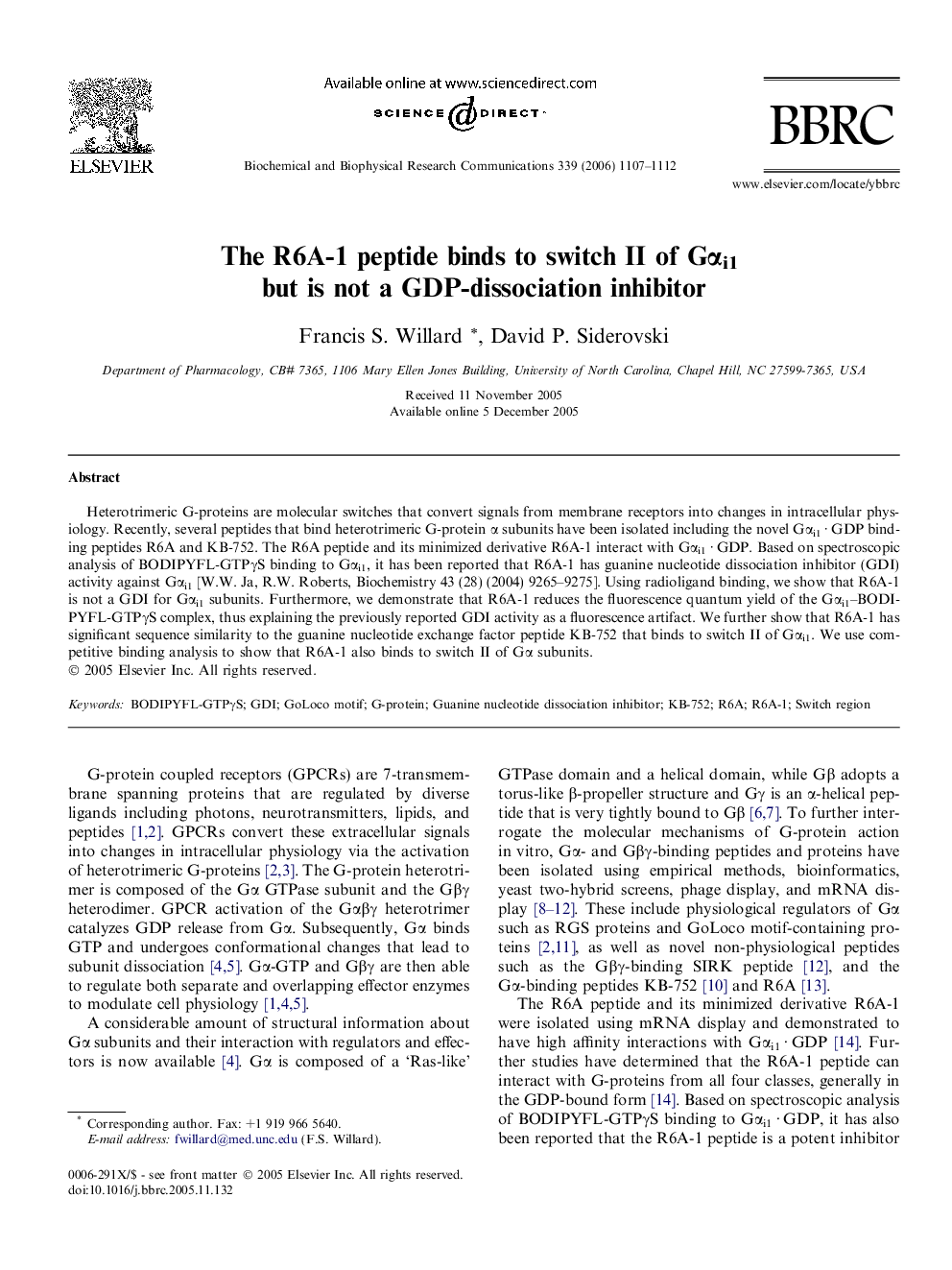| Article ID | Journal | Published Year | Pages | File Type |
|---|---|---|---|---|
| 1940866 | Biochemical and Biophysical Research Communications | 2006 | 6 Pages |
Heterotrimeric G-proteins are molecular switches that convert signals from membrane receptors into changes in intracellular physiology. Recently, several peptides that bind heterotrimeric G-protein α subunits have been isolated including the novel Gαi1 · GDP binding peptides R6A and KB-752. The R6A peptide and its minimized derivative R6A-1 interact with Gαi1 · GDP. Based on spectroscopic analysis of BODIPYFL-GTPγS binding to Gαi1, it has been reported that R6A-1 has guanine nucleotide dissociation inhibitor (GDI) activity against Gαi1 [W.W. Ja, R.W. Roberts, Biochemistry 43 (28) (2004) 9265–9275]. Using radioligand binding, we show that R6A-1 is not a GDI for Gαi1 subunits. Furthermore, we demonstrate that R6A-1 reduces the fluorescence quantum yield of the Gαi1–BODIPYFL-GTPγS complex, thus explaining the previously reported GDI activity as a fluorescence artifact. We further show that R6A-1 has significant sequence similarity to the guanine nucleotide exchange factor peptide KB-752 that binds to switch II of Gαi1. We use competitive binding analysis to show that R6A-1 also binds to switch II of Gα subunits.
